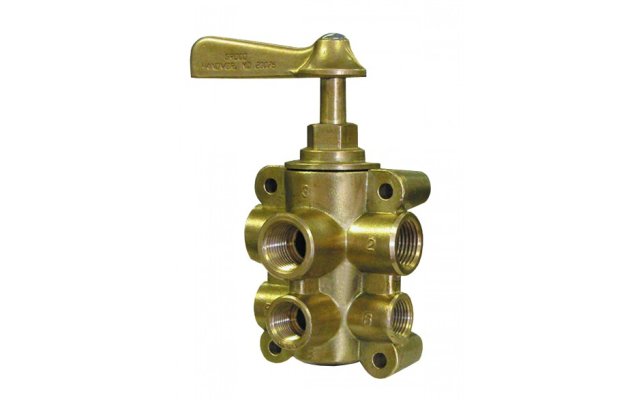Most of what I know about the topic equalization comes from the 18 months my 30 Pilot II sat in its wet slip (waiting for the lift to be rebuilt) end-on to the back porch where any list was instantly noticed. The fuel system as installed is simple with deck fills to the two saddle tanks and fuel supply valves on each tank at the lower aft corners. The fuel from either tank enters a 3/8" fuel cross connecting hose which has a tee in it from which the engine draws its fuel. Opening both valves theoretically levels the fuel levels of the two tanks. The as-built system returns fuel to only the port tank. Fuel return from my engine is around 12 gallons an hour while burn rate is 8.7 GPH at cruise RPM of 3000 (80% of max fuel use at max HP rating).
So, why was my boat affecting a port list with both tank valves open? I can't say that I know for sure considering that the 200-pound generator is to stbd while the galley cabinetry is to port and batteries are centered. The waste tank to port is only 17 gallons and always empty, and the 40-gallon water tank is centered. When the boat is in the lift, which can the leveled, and the clinometer bubble is on zero, the tanks are self-leveled via the cross connection but leave it in the water with tanks less than full.....
I have pumped a lot of fuel from my 30-gallon dock cart tank into the stbd tank while the boat is in the lift, and the fuel moves across quickly enough if not rapidly; so I know the cross connection is ok. Besides, I replaced that hose at one point to ensure fuel gunk had not collected there.
Another potential issue is, what do you do if your Pilot's port fuel tank develops a leak? You are not going to be able to empty the tank and continue to run the boat from the stbd tank unless you have a way to send all that return fuel to the stbd tank. Two friends with this boat experienced the issue of fuel tank leaks in the last couple of years. One of them just kept running the boat with one tank empty and the other doing duty as supply and return tank until the winter haulout at which time he will have both tanks replaced.
I have made the simple and quick mod to allow the return of fuel to either or both the tanks and typically run returning to both. However, with an additional mod which allows me to monitor the level of both tanks from the helm (why did MS not do this????), I can switch return to the lighter tank until levels return to even.
And that, as Gump said, is all I know about that.

